Top Emerging Tech for Good of 2020 > ENGINEERING.com
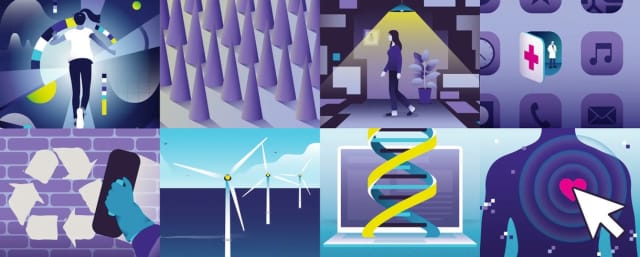
Artificial intelligence, computer simulation, biotechnology, renewable energies, genomic synthesis, nanotechnology and data analytics are among the recurring science fields backing up the Top Ten Emerging Technologies in 2020. (Image courtesy of the World Economic Forum.)
A group of international experts from the World Economic Forum (WEF) and Scientific American met to compile an essential guide on the Top Ten Emerging Technologies in 2020 that will, no doubt, make us more optimistic in the New Year. The final choices were made after a close evaluation of 75 revolutionary tech nominations.
The top winning technologies excelled using the following criteria. First, nominations were evaluated based on the possibility that the technology will stimulate socioeconomic progress by being superior to current technology or methods. Second, winners were picked based on the novelty of the technology and the potential impact it would have in the first three to five years after its implementation.
The Great Reset proposal launched last June by the UK’s Prince Charles and Klaus Schwab, director of the WEF, urges all stakeholders to act jointly and seize every opportunity to offer unprecedented sustainable solutions and alternatives to rebuild the future. Hence, the emerging technologies are crucial to bringing further answers to the three main current issues—the worldwide health crisis, the patent economic fallout and the rate of climate change that shows no sign of slackening.
Microneedles to Deliver Medicines Without Pain
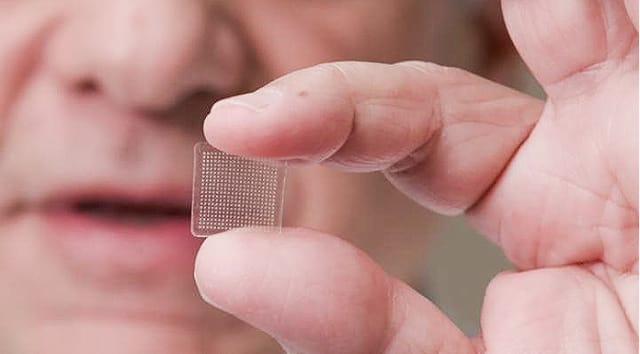
A 400-microneedle fingertip-sized patch made from sugar. (Image courtesy of Health Europa.)
The engineering behind these 1-100 microns wide microneedles is aimed at uses ranging from disease diagnosis and treatment, immunobiological administration and cosmetic applications. The nanotechnology involved in manufacturing these microneedles provides users with a noninvasive painless method for vaccination, self-treatment or at-home blood drawing.
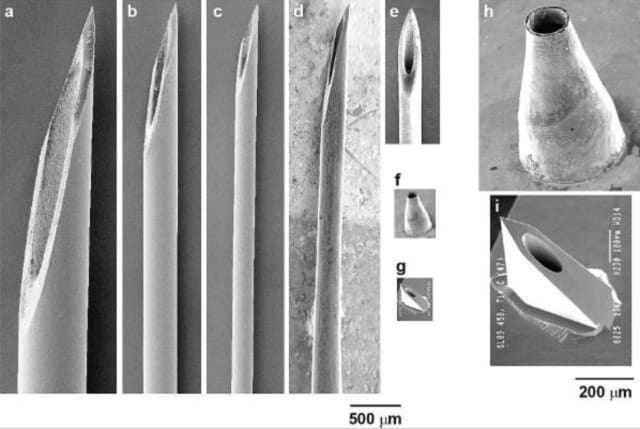
Size comparison among hypodermic needles and microneedles. Scanning electron micrographs of (a) 21-gauge, (b) 27-gauge and (c) 31-gauge hypodermic needles (BD Technologies), and (d) tapered 33-gauge Terumo NanoPass hypodermic needle (image courtesy of Kyuzi Kamoi). Scanning electron micrographs of microneedles at the same magnification as hypodermic needles: (e) stainless steel microneedle with a total length of 1.5 mm (image courtesy of John Mikszta, BD Technologies), (f) nickel microneedle with a length of 500 μm, and (g) silicon microneedle with a length of 450 μm (image courtesy of NanoPass Technologies). Higher magnification scanning electron micrographs of (h) nickel microneedle and (i) silicon microneedle for the needles shown in f and g, respectively. (Note: NanoPass by Terumo and NanoPass Technologies are unrelated.) (Caption from Does Needle Size Matter?, Journal of Diabetes Science and Technology.)
The microneedles are welcomed by patients because they do not touch the nerve endings present at the dermis layer. Moreover, they can be paired with microsensors to assess many biomarker indicators of disease status, such as glucose or immune cells. Integrated with wireless communication devices, they are capable of measuring, evaluating and even delivering adequate drug doses.
Microneedles will contribute greatly to underserved areas in terms of accessibility and affordability since they are low cost and require minimal training to administer. More discrete and safer to handle than conventional needles, many of these tiny needles are still waiting for regulations to be cleared and approved. While many more uses are expected, further research is needed to determine their ability to deliver larger doses, if certain drugs can be passed through microneedles and the impact of factors like the patient’s age and weight and the injection site on their effectiveness.
Chemistry Powered by Sunlight Would Reduce Dioxide Emissions
The fight against climate change, reducing carbon dioxide emissions and replacing the consumption of fossil fuels to manufacture useful chemicals continues.
However, options have come to light that can convert waste carbon dioxide into chemicals. A new approach in the field of solar chemical research employs sunlight-activated catalysts in their production. These photocatalysts have been altered so that they only require visible light instead of high-energy ultraviolet light.
Enter the creation of “solar” refineries that use solar-driven carbon dioxide conversion to produce value-added chemicals. Implementing such a process would cause a disruption of the current linear economy model and a gradual shifting to a circular economy aimed at eliminating waste by regenerating and redesigning.

A “solar refinery” that converts sources of carbon and hydrogen in the form of CO2 and H2O to useful fuels. (Image courtesy of oil-gasportal.com.)
Virtual Patients Used in Simulated Real-Life Clinical Scenarios
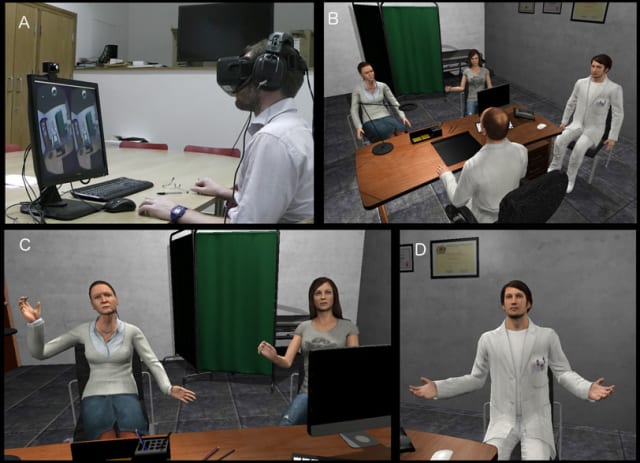
Stills from the virtual reality (VR) scenarios in a study conducted by the UCL, United Kingdom. (Image courtesy of ucl.ac.uk.)
Running experiments on virtual patients is much safer than doing them on humans. The use of virtual patients in medicine has spawned the term “silico medicine” to refer to the practice of conducting clinical trials and testing drugs or therapies on simulated organs or body systems.
In addition to reducing the risk and stress for live volunteers, benefits of virtual patients include more economical trial costs and a reduced time to market, with virtual patients running algorithms with the data drawn from virtual organs faster than is possible with living organs.
Virtual patients will also have an impact in education. Medical schools will need to revise and renew their curricula to reskill health care personnel in the fields of artificial intelligence and computer simulations. Future doctors will learn from realistic virtual situations without running the risk of catastrophic mistakes.
Spatial Computing Converges the Digital and Physical Worlds
Spatial computing is a broad term for the immersive technologies that enable us to explore the world of “extended reality,” including augmented reality (AR) and virtual reality (VR). In AR, digitized objects and information overlap with the real world, whereas in VR users are fully immersed in a totally digital world.
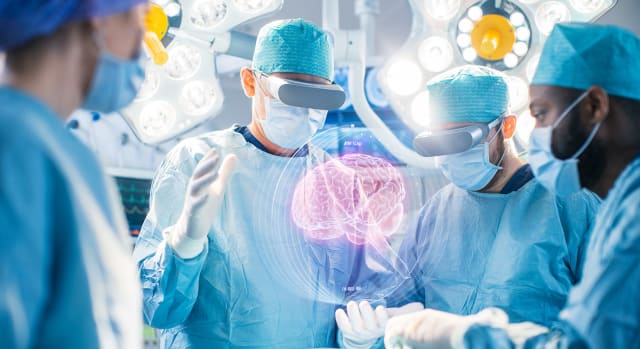
Spatial computing merges the digital and physical worlds through immersive technologies like virtual reality (VR) and augmented reality (AR). (Image courtesy of stambol.com.)
Digital Medicine, a Step Closer to Personalized Medical Treatment
With COVID-19, people were asked to avoid risky trips to health care facilities, and medical practices were quick to adopt telehealth services. In addition, a collection of hardware- and software-driven products have come into play for measurement and intervention in medical practices.
An abundance of apps are available to monitor and accurately collect data, such as body temperature, increased heart rate levels or sleep activity. Microbioelectric devices can take the form of pills with sensors inside them to detect anomalies, for example, cancerous DNA. They can also create data flows that will alert physicians of the onset of or change in a condition.
Many apps and technologies are awaiting the approval from European and American regulating entities. A few prescription digital therapeutic apps like reSET and reSERT-O, which provide cognitive behavioral therapy (CBT), are demonstrating excellent results as detection aid devices in the treatment of substance use disorder (SUD).
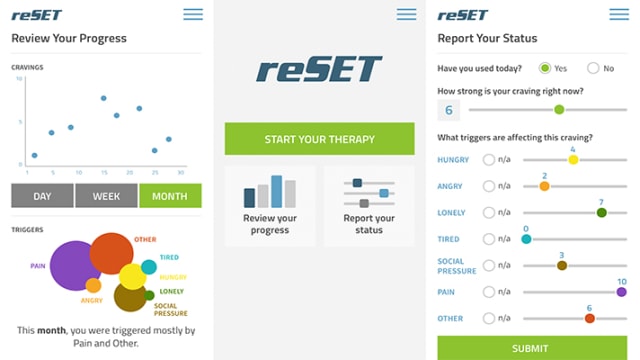
Pear Therapeutics’ reSET was the first 90-day prescription digital therapeutic (PDT) to receive FDA authorization. (Image courtesy of mobileathsnews.com.)
Airplanes Benefit from Electric Propulsion
The common goal in the development of new energies applied to transportation is to cut out carbon emissions and drastically reduce fuel costs and noise levels. The aviation industry can offset these by deploying electric propulsion.
Airbus is one of the companies trying electric and hybrid-electric propulsion, but the investment and regulatory hurdles are formidable. The company plans to fly a 100-passenger airplane by 2030.
In 2016, NASA began to develop and validate technologies to make aircraft transportation more efficient and environmentally friendly. One of the projects involved the design of a wing that featured 12 small electric propellers to generate lift during takeoff.
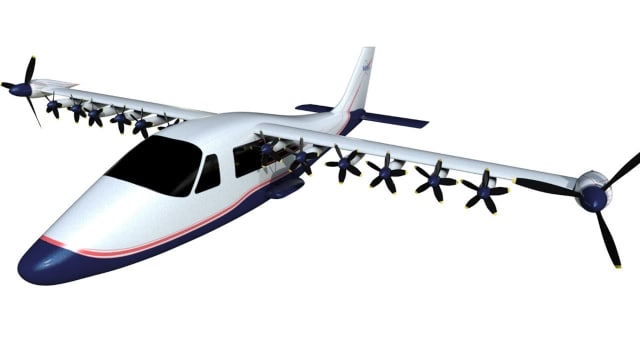
NASA’s X-57 first all-electric experimental aircraft. (Image courtesy of greenoptimistic.com.)
Cement with Low Carbon Content May Reduce Environmental Impacts
Four billion tons of cement are currently produced every year with the help of enough fossil fuel to account for nearly 8 percent of the world’s total emissions. In view of an increased global demand for new buildings and infrastructures, it is imperative to start decarbonizing to reduce the rate of climate change.
Approaches to reduce carbon dioxide emissions from cement production include modifying the proportion of materials used in a recipe; storing carbon dioxide through mineralization; or combining hydrogel, sand and bacteria to create a “living” brick that can be split into up to eight bricks with “self-healing” capabilities.
About 30 percent of the worldwide cement production is under the representation of the Global Cement and Concrete Association (GCCA). A couple of years ago, the GCCA presented the first Sustainability Guidelines for the industry, describing a set of key measurements with the goal of tracking performance improvements.

Solidia® Concrete CO2-cured block. (Courtesy image of Business Wire)
Quantum Sensors Will Boost Precision in Autonomous Vehicles

The U.S. Army created a quantum sensor to detect communication signals over an entire radio frequency spectrum (0 to 100 GHz). (Image courtesy of DefenceTalk.)
A quantum sensor achieves a breakthrough from the extreme precision that allows it to detect otherwise unnoticeable changes in motion and minimum variations in gravitational, electric and magnetic fields—for example, the weak fields in a human brain.
This transformative technology of quantum sensors can also be implemented in autonomous vehicles, becoming more sensitive “eyes.”
Researchers are currently working on the development of smaller and more affordable quantum sensors and in making them less sensitive to disturbances, so that their application is not restricted to controlled environments. Governments and private investors are funding these advancements with an emphasis on quantum sensors applications in the health care and defense sectors.
Green Hydrogen to Be Tallied as a Renewable Energy
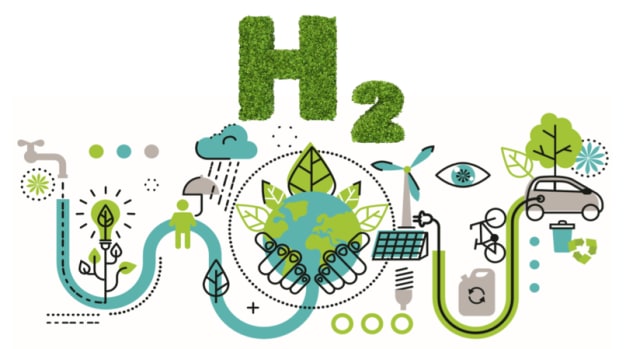
Green hydrogen is considered the sustainable fuel of the future. (Image courtesy of Mergers Alliance.)
Green hydrogen is created by splitting water into hydrogen and oxygen using electrolysis with a renewable (solar or wind) energy.
In the past, electrolysis was an expensive process. Currently, this situation has been reversed due to a significant portion of renewable electricity being stored at grid scale and the existence of more efficient electrolysers.
The Paris Agreement includes green hydrogen as one of the four technologies that will help eliminate 10 gigatons of carbon dioxide a year.
Designing Genomic Structures from Scratch with Whole-Genome Synthesis
Upon identifying the virus responsible for the COVID-19 disease, Chinese scientists made its genetic sequencing available to the scientific community by uploading it to a genetic database.
Whole-genome synthesis and the potential to access the virus’s genetic sequencing allowed other scientists to immediately reconstruct the novel coronavirus in their labs without having any physical sample “at hand. Synthesized viral genomes help researchers understand how viruses spread and cause diseases.
By combining synthesis technology and software, scientists now aim to assemble larger DNA sequences that can be used for cell-based therapies or biomanufacturing. Genomic synthesis needed the support of a safety network comprised of researchers, engineers and ethicists to share best practices; explore the ethical, legal and social implications; and develop new technologies.

Whole-genome synthesis as an extension of synthetic biology, which is mediated by software, makes it possible to print larger swaths of DNA. (Image courtesy of Scientific American)
Reaching Global Agreement Toward Cohesive Policymaking
These top 10 emerging technologies are not devoid of risks and uncertainties in terms of their safe implementation. What are the consequences of data sharing? Will immersive technologies be accessible to the general public? To what extent will less favored countries need help from those that stood stronger after the pandemic hit?
The answer to those questions may be in the willingness of governments, scientists, and the private and public sectors to narrow the gap at the local and international levels, and to acknowledge their similarities and work on solving their differences. Joint efforts could lead to setting common ground standards, exchanging best practices, and adopting strong international regulations for the global deployment of these emerging technologies.
